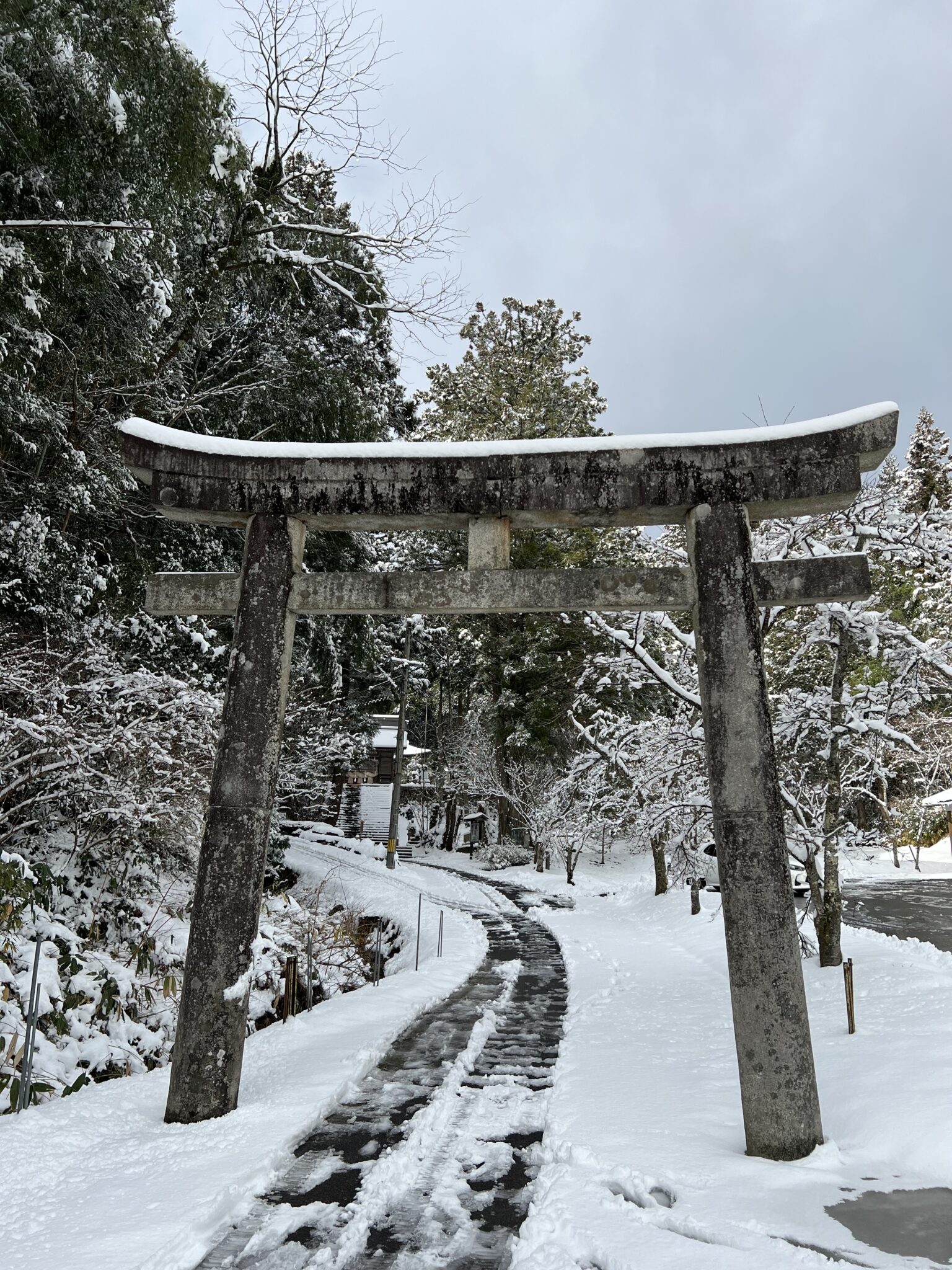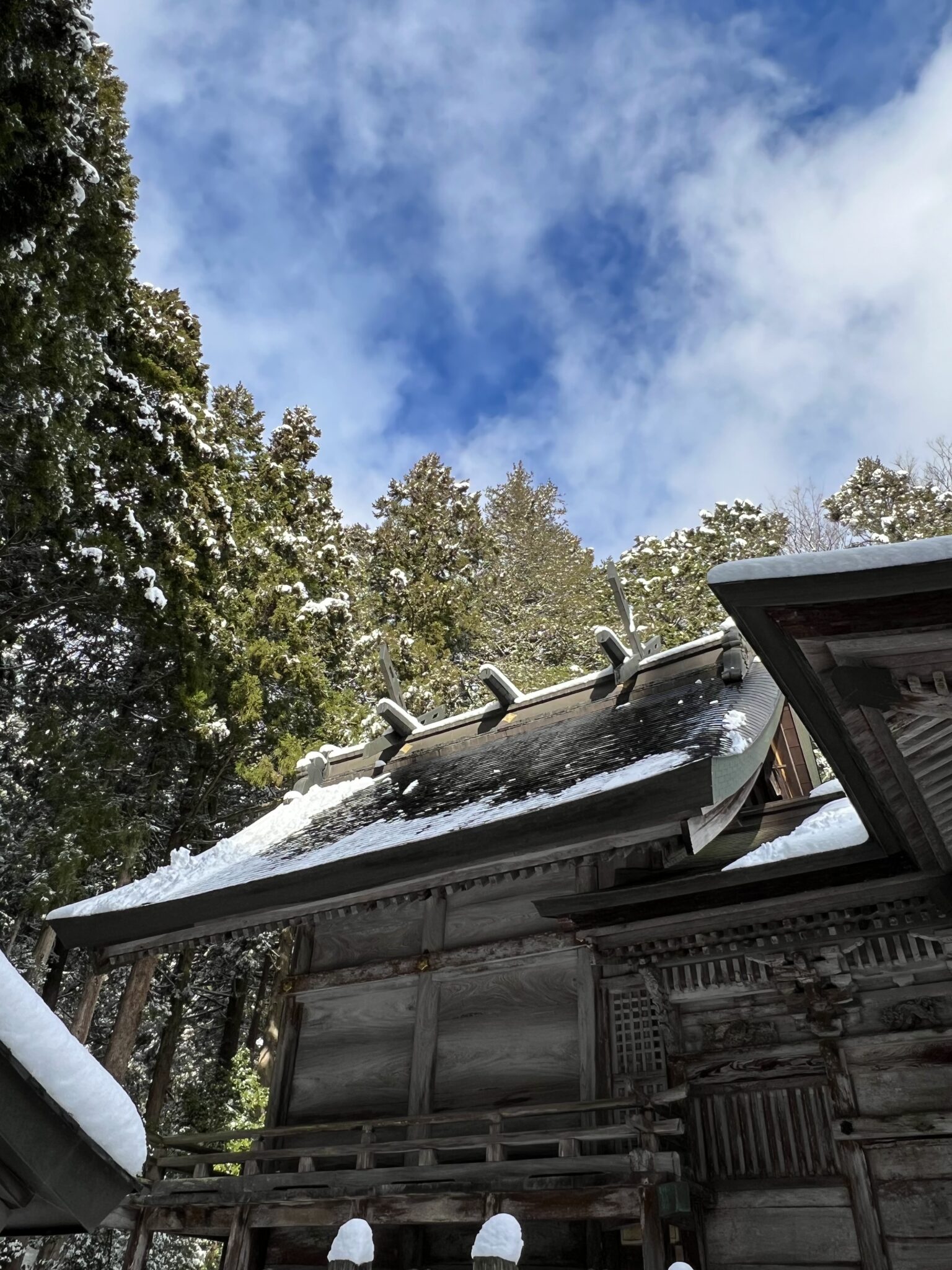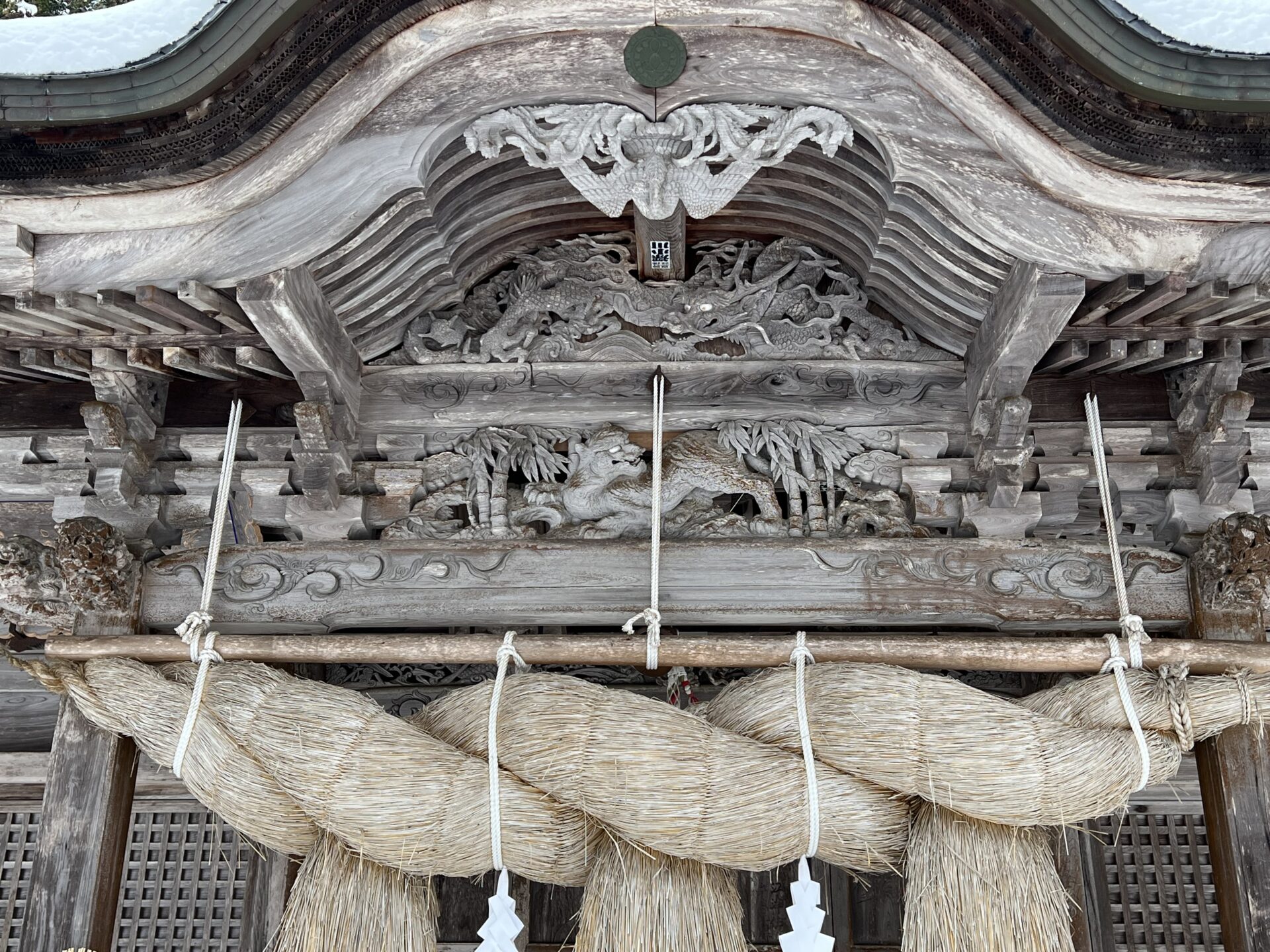Kanayago Shrine is likely an unfamiliar name to most people, except for those involved in the ironworking industry. Nestled quietly in this land of Okuizumo (Hirosecho Nishihida, Yasugi City), Kanayago Shrine is the head shrine of approximately 1,200 Kanayago Shrines across Japan.
Access
On the third day of my trip to Shimane, I learned that a friend’s father comes from a family of shrine priests associated with it, which sparked my interest. So, we drove about 40 kilometers from Yonago to visit it. The directions are quite straightforward if you have a navigation system, making it difficult to get lost.
That morning, Okuizumo was blanketed in snow from the night before, creating a tranquil and serene atmosphere. This area has been a center of Tatara ironworking since ancient times. The land of Okuizumo is ideal for iron production, rich in high-quality iron sand extracted from the earth, abundant forests, and the water of the Hii River. As we neared our destination, a large stone torii gate and a big stone monument inscribed with “Kanayago Shrine” marked the entrance from the road to the shrine approach. This torii gate is said to be the largest stone torii in Japan. Although there were traces of a snowplow on the path, it seemed we were the only visitors. We drove down a narrow path and found a slightly lower parking space on the right, where we parked and got out. It would likely be quite difficult to visit this shrine without a car, as we did not see any public transportation.

Perhaps due to the snow, the atmosphere was exceptionally quiet and tranquil, with a palpable sense of solitude. After passing through the torii gate and carefully climbing the snow-covered stone steps, we reached the main shrine building, a magnificent structure made entirely of zelkova wood. The current building was reconstructed after the original shrine was destroyed in a fire during a festival in 1858 (Ansei 5). The craftsmanship is remarkably detailed, with beautiful carvings of a phoenix, dragon, and tiger above the main entrance’s shimenawa rope. One can only imagine how stunning the shrine must have been when these carvings still retained their original colors.
Deities Enshrined
- Kanayago-no-Kami: A female deity. It is believed that this ancient goddess was originally enshrined here, although there are no documents to confirm this.
- Kanayamahiko-no-Kami and Kanayamahime-no-Kami, along with 15 other deities: These gods are mentioned in the Kojiki and Nihon Shoki. It is possible that they were associated with this shrine as replacements for Kanayago-no-Kami due to their appearance in these ancient texts.
Additionally, in the Okuizumo region, there are numerous depictions of a female deity riding a white fox, known as the “Kanayago-kami Riding a Fox Illustration.” This image bears a striking resemblance to the scene in the movie Princess Mononoke where the character San rides the wolf Moro. It is said that the connection between these images is also mentioned in the making-of video for the film.
Origin and History
Kanayago Shrine has suffered several fires in the past, resulting in the loss of documents and ancient records, so its exact origins are unclear. However, it has been known since ancient times as one of the Seven Guardian Deities of Tatara Ironworking.
According to legend, Kanayamahiko-no-Kami, who brought rain to the drought-stricken province of Harima and saved many people, said, “I will now go west to make iron.” He then rode off on a white heron and is said to have first landed on a katsura tree in this area of Okuizumo. Kanayamahiko-no-Kami spread ironworking in the region and became known as Kanayago-no-Kami. Since then, Kanayago-no-Kami has always been enshrined at Tatara ironworking sites, and katsura trees have been planted in her honor.
Interestingly, some of the legends involve elements of “death” and “impurity,” including stories that bodies were placed around the Tatara sites.
Divine Virtues and Blessings
The deity of iron and fire.

Highlights
The grounds of Kanayago Shrine are surrounded by numerous katsura trees, which emit a sweet fragrance that always lingers in the air. However, when I visited, the snowfall prevented me from noticing the katsura’s sweet scent. The shrine grounds, enclosed by a dense forest, were meticulously maintained, creating a very pleasant atmosphere. In areas where the snow had made the paths muddy, the shrine staff had thoughtfully laid down straw mats earlier in the morning. This kind of attention to detail was particularly touching. I offered my prayers and signed the guest book, hoping to visit again.
The weather that day was quite unpredictable, alternating between clouds, sunshine, and snow. Yet, during the brief time I was praying at the main shrine, the clouds parted slightly, revealing patches of blue sky. The snow-covered shrine and the surrounding trees against this backdrop looked incredibly divine. It was a long journey, but I’m truly glad I made the effort to visit.

